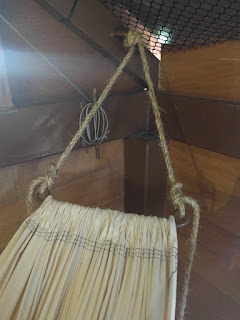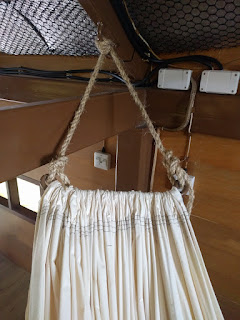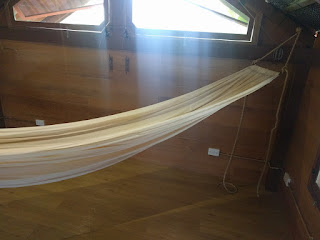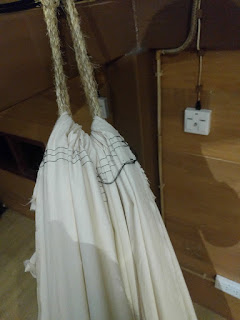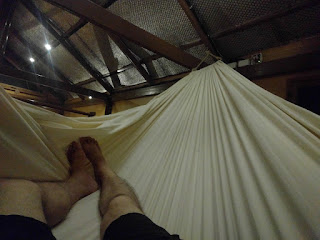I added very small 30cm spreader bars to our giant sleeping hammock, and it worked like a charm! As mentioned in my previous post on the subject, the huge width of the hammock causes the edges to curl up and somewhat cocoon (or suffocate?) the occupant. Additionally, this height on the sides makes it difficult to get in and out of the hammock. I’ve read that spreader bars are very bad because they create instability that can dump you out. Hammocks are supposed to have the occupant at a lower CG than the sides so that you don’t fall out. Spreader bars flatten out the hammock so that if you roll to the side, the hammock can flip over.
But clearly, a hammock without spreader bars is just a hammock with zero sized spreader bars. The ones that cause stability problems are 1-2 meters wide. So I decided to go for something in between to get the hammock to flatten out a little to make it more like a normal hammock in terms of height of the sides, just to compensate for the extraordinary width. The number I decided to start with was 30cm for the spreader bar size.
We had one of the workers bend it out of scrap rebar we had left over from something or other and painted it to avoid rust.
This is what the two sides looks like once the hammock was tied up with it:
Here is a wider view:
Just to illustrate the problem, here is what the rope attachment looked like without the spreader bars:
Not only are the sides forced to go a longer distance than the center because they need to curve around the occupant, but the sides are actually pulled tighter than the center. This results in the sides being “pulled tight” and thus upwards for two reasons. But if you look back at the spreader bar picture, the sides aren’t pulled any tighter than the center, and by spreading it slightly (+/- 15cm from the center) it also releases some of the tension on the sides a bit more that way.
When I tested it out, I could lie almost perfectly flat, and the sides didn’t feel like they were so suffocating any more:
(Note the 30 degree off-axis lying angle to flatten out the posture.)
So that’s it. The hammock now works wonderfully! The next step is to try to spend the night sleeping in it. But first I will string up some mosquito netting…
Update 2017-09-12: For the record, I figured I should update this to mention that in my later version of the hammock I’ve been using for a number of months now, I didn’t add the spreader bars. I’m split as to whether I liked the version with the spreader bars or the version without more. But given that it is certainly simpler without, I figured it isn’t worth adding something that I’m not sure if I like it more or not.
